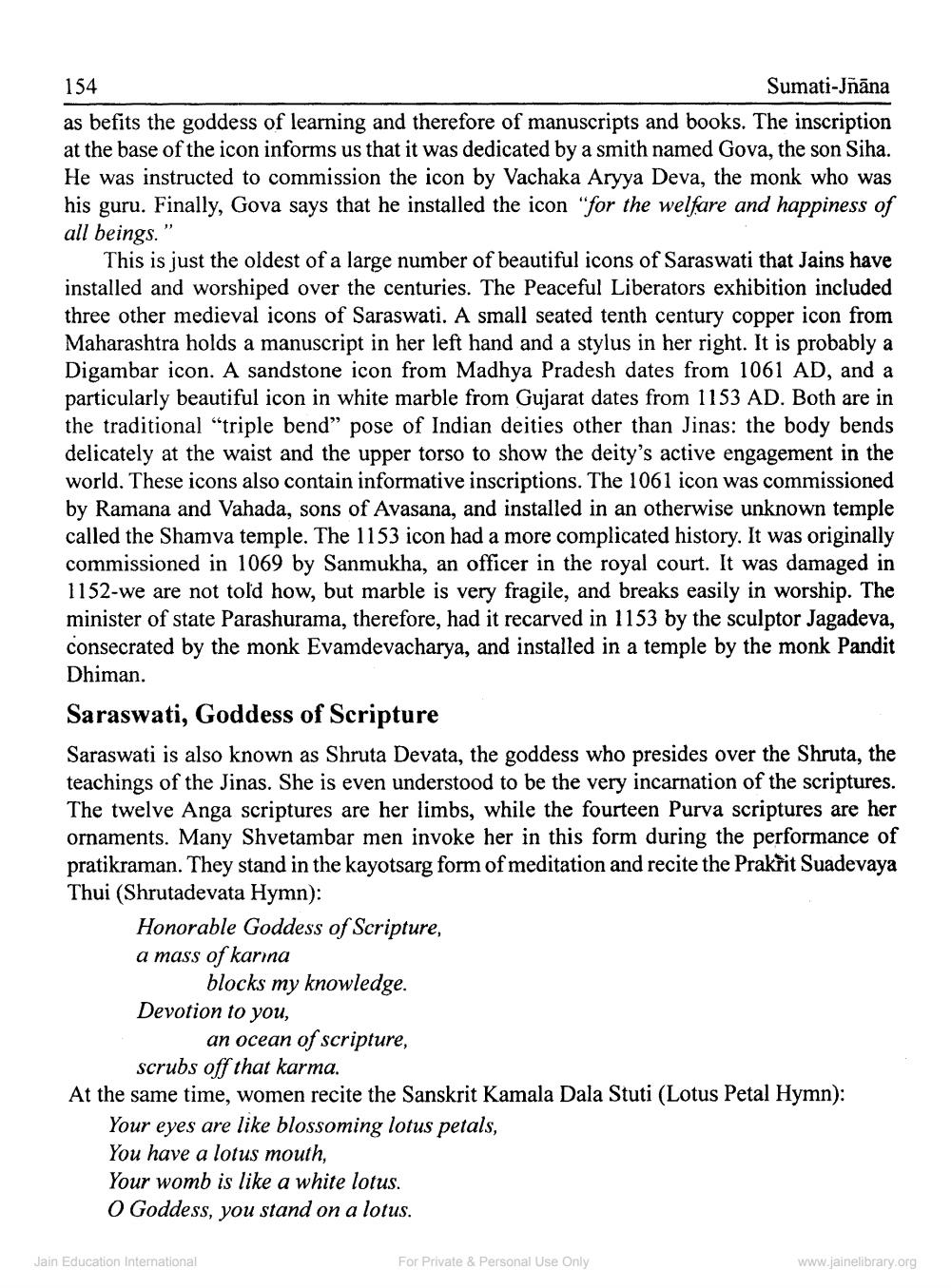________________
154
Sumati-Jñāna as befits the goddess of learning and therefore of manuscripts and books. The inscription at the base of the icon informs us that it was dedicated by a smith named Gova, the son Siha. He was instructed to commission the icon by Vachaka Aryya Deva, the monk who was his guru. Finally, Gova says that he installed the icon "for the welfare and happiness of all beings.
This is just the oldest of a large number of beautiful icons of Saraswati that Jains have installed and worshiped over the centuries. The Peaceful Liberators exhibition included three other medieval icons of Saraswati. A small seated tenth century copper icon from Maharashtra holds a manuscript in her left hand and a stylus in her right. It is probably a Digambar icon. A sandstone icon from Madhya Pradesh dates from 1061 AD, and a particularly beautiful icon in white marble from Gujarat dates from 1153 AD. Both are in the traditional "triple bend" pose of Indian deities other than Jinas: the body bends delicately at the waist and the upper torso to show the deity's active engagement in the world. These icons also contain informative inscriptions. The 1061 icon was commissioned by Ramana and Vahada, sons of Avasana, and installed in an otherwise unknown temple called the Shamva temple. The 1153 icon had a more complicated history. It was originally commissioned in 1069 by Sanmukha, an officer in the royal court. It was damaged in 1152-we are not told how, but marble is very fragile, and breaks easily in worship. The minister of state Parashurama, therefore, had it recarved in 1153 by the sculptor Jagadeva, consecrated by the monk Evamdevacharya, and installed in a temple by the monk Pandit Dhiman.
Saraswati, Goddess of Scripture
Saraswati is also known as Shruta Devata, the goddess who presides over the Shruta, the teachings of the Jinas. She is even understood to be the very incarnation of the scriptures. The twelve Anga scriptures are her limbs, while the fourteen Purva scriptures are her ornaments. Many Shvetambar men invoke her in this form during the performance of pratikraman. They stand in the kayotsarg form of meditation and recite the Prakrit Suadevaya Thui (Shrutadevata Hymn):
Honorable Goddess of Scripture,
a mass of karina
blocks my knowledge.
Devotion to you,
an ocean of scripture, scrubs off that karma.
At the same time, women recite the Sanskrit Kamala Dala Stuti (Lotus Petal Hymn):
Your eyes are like blossoming lotus petals,
You have a lotus mouth,
Your womb is like a white lotus.
O Goddess, you stand on a lotus.
Jain Education International
For Private & Personal Use Only
www.jainelibrary.org




